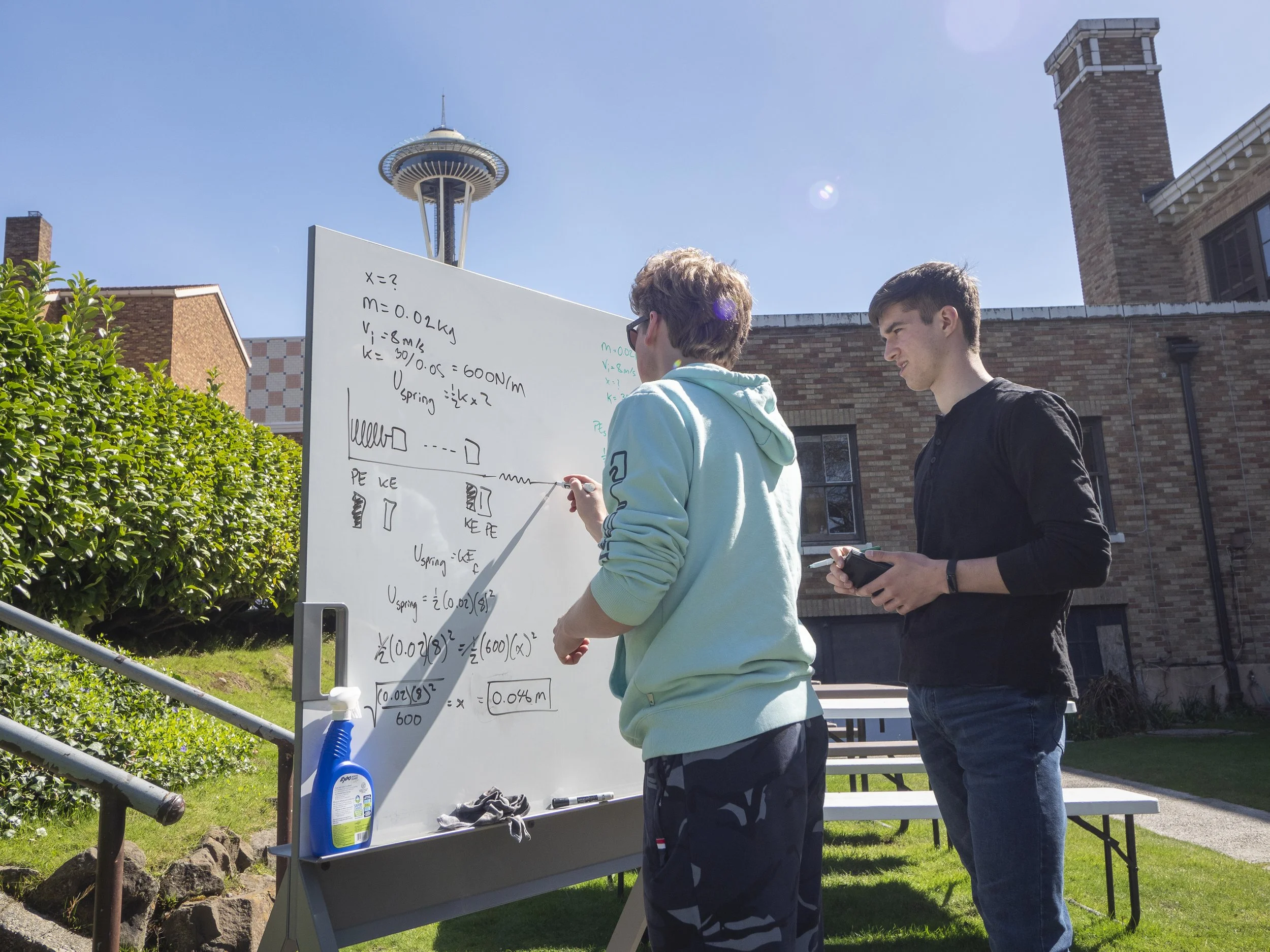Place-Based Education
By Julia Grazioli-Keiter
One main feature of education at The Downtown School is our emphasis on the “So what?” and the “How is this relevant?” to learning. These applications come in many ways: through connecting with the city in the form of guest speakers or excursions to local organizations, through personalizing content by allowing students choice when possible (for example, in research projects or essays), or through explicitly showing students how the content applies to areas familiar with them.
One way this shows up in our mathematics curriculum is through Place-Based Education.
Unlocking a student's potential for mathematical thinking requires bridging the gap between abstract concepts and real-life experiences. Recognizing the importance of connecting students with their surroundings, experiences, and interests is a pivotal step toward helping them envision their own capabilities in mathematics, because connecting the learning to something tangible makes the concepts relevant. To this end, "Place-Based Education" is an instructional approach that focuses on developing students’ sense of place and learning specifically through exploring their environment.
Throughout my years in the classroom, I have often encountered the challenge of igniting enthusiasm and engagement in my students when it comes to learning mathematics. Regardless of the group's preparation and motivation, the question lingers: "Why do we need to learn this?" Place-Based Education not only addresses this inquiry, but does so by tapping into the rich tapestry of experiences and perspectives that students bring with them.
Our surroundings, the places we frequent, and the experiences that we accumulate all serve as the building blocks of our cognitive frameworks. This understanding forms the basis of Place-Based Education, an approach that leverages the familiar to teach the unfamiliar. By allowing students to investigate questions that are directly observable in their surroundings, we infuse context and concreteness into a subject that is often taught abstractly. Place-Based Education makes the abstract concrete.
At DTS, we leverage our connection to the city of Seattle by asking questions such as these:
What is the monetary and ecological value of trees in properties in and near Seattle?
What is the impact of tides on people-powered boats in the Duwamish Waterway?
Which barriers best protect our shorelines from coastal erosion with the least impact to the unique ecosystem of the Sound?
These questions allow students to not only apply mathematical concepts, but also gain an understanding of the space they inhabit. The Place-Based Education model also encourages students to pose extension questions and consider other variables that might be at play in the scenarios they explore. This prompts them to delve deeper into critical thinking, fostering a desire to extend their learning when confronted with challenges that demand additional skills. The result is a classroom environment where inquiry and curiosity drive the learning process, empowering students to identify as mathematicians.
In essence, Place-Based Education goes beyond merely providing answers to the question of "why?" It transforms education into a dynamic, interactive experience that equips students with mathematical skills and nurtures a lifelong love for learning. By recognizing and embracing the potential of Place-Based Education, educators can foster a generation of learners who not only understand the relevance of mathematics but actively engage with it as a tool for understanding and shaping the world around them.
“If we want children to flourish, to become truly empowered, let us allow them to love the earth before we ask them to save it.” – David Sobel



